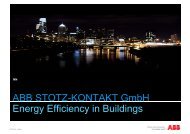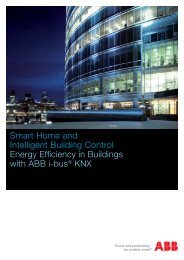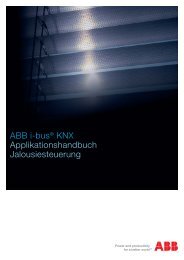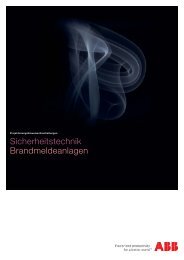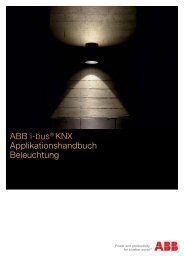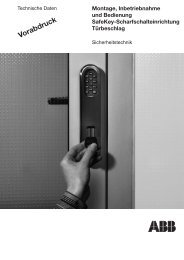Heating Ventilation Air Conditioning (.PDF)
Heating Ventilation Air Conditioning (.PDF)
Heating Ventilation Air Conditioning (.PDF)
Create successful ePaper yourself
Turn your PDF publications into a flip-book with our unique Google optimized e-Paper software.
Control functions<br />
The useful application of presence-dependent control in a building depends on the following<br />
criteria:<br />
– The time constant for heating up and cooling down the rooms<br />
– Thermal insulation<br />
– Heat storage capacity of the walls<br />
– Method of heating and cooling (slow fast)<br />
– Type and duration of the interruption in usage<br />
In practice, check whether this type of temperature control is useful and possible.<br />
Presence and motion detectors are generally not used exclusively for this purpose; they are<br />
used for lighting control either.<br />
A further possibility for room control is the combination of occupancy control with timer<br />
control. The following two graphics show the progress of the setpoint over time using<br />
the example of a heating and cooling application.<br />
HEATING:<br />
Temperature in °C<br />
22<br />
20<br />
18<br />
Comfort:<br />
Standby (day):<br />
Standby (night):<br />
40<br />
22 °C<br />
21 °C<br />
18 °C<br />
movement daytime<br />
no movement daytime<br />
no movement nighttime<br />
ΔTemp. ~ 2 °C<br />
00:00 06:00 10:00 14:00 19:00 24:00<br />
07:00 11:45 15:00<br />
Fig. 44: Progression of HEATING setpoint over time<br />
Time in h


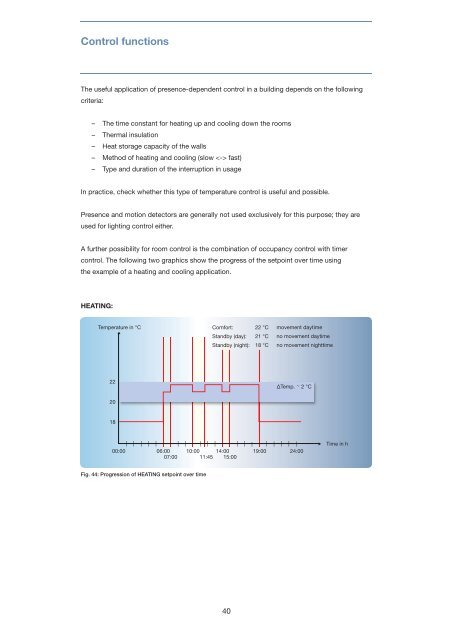
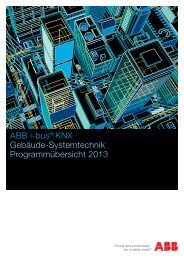
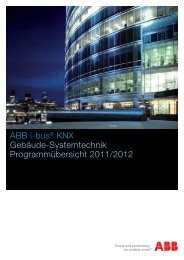
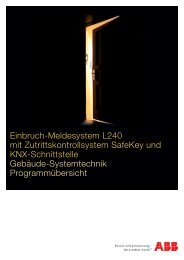

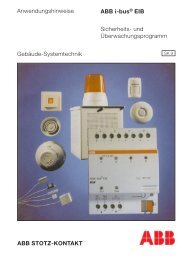
![The Right Decision [Solutions for Hotels] (.PDF)](https://img.yumpu.com/9654011/1/184x260/the-right-decision-solutions-for-hotels-pdf.jpg?quality=85)
